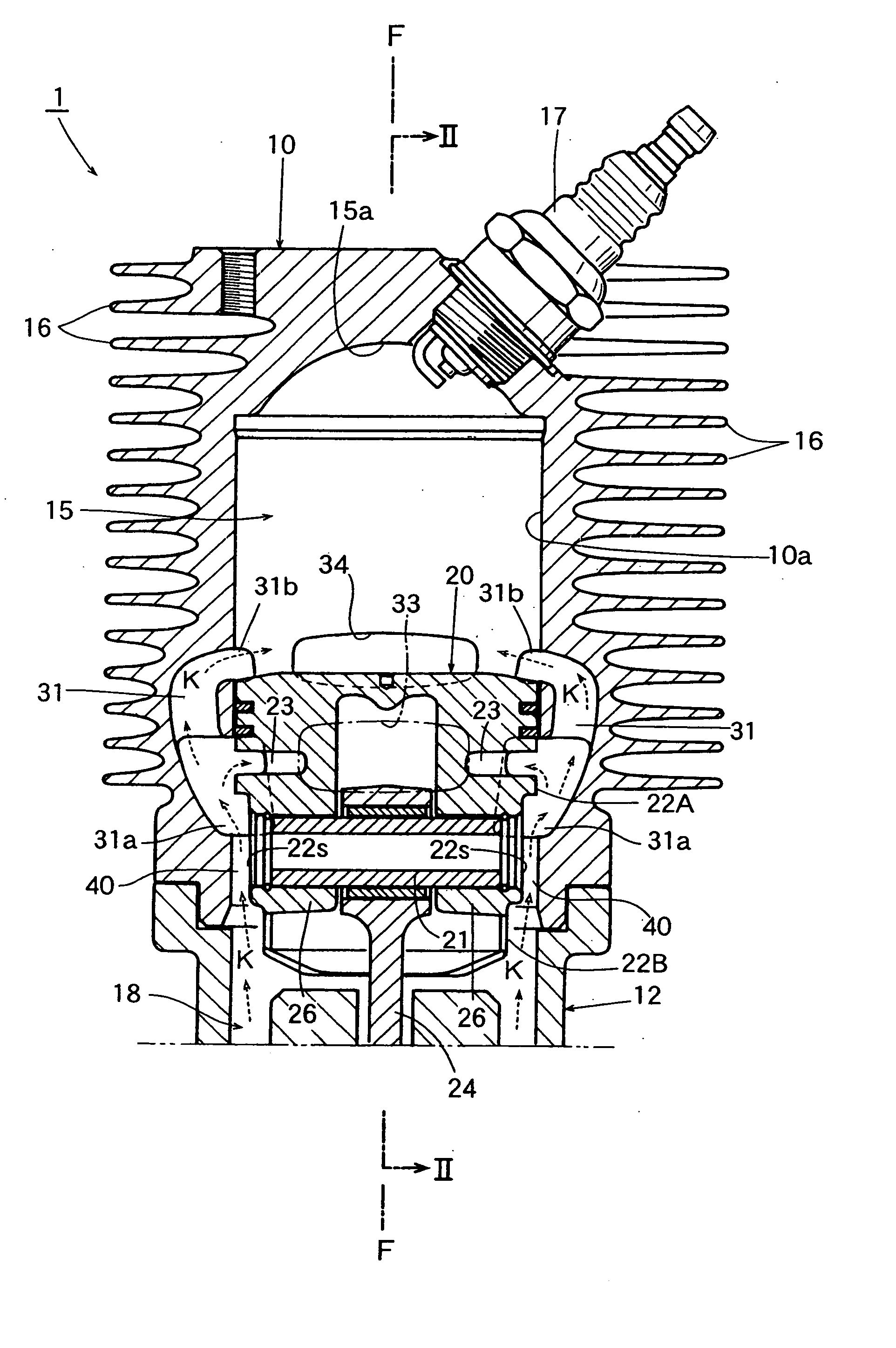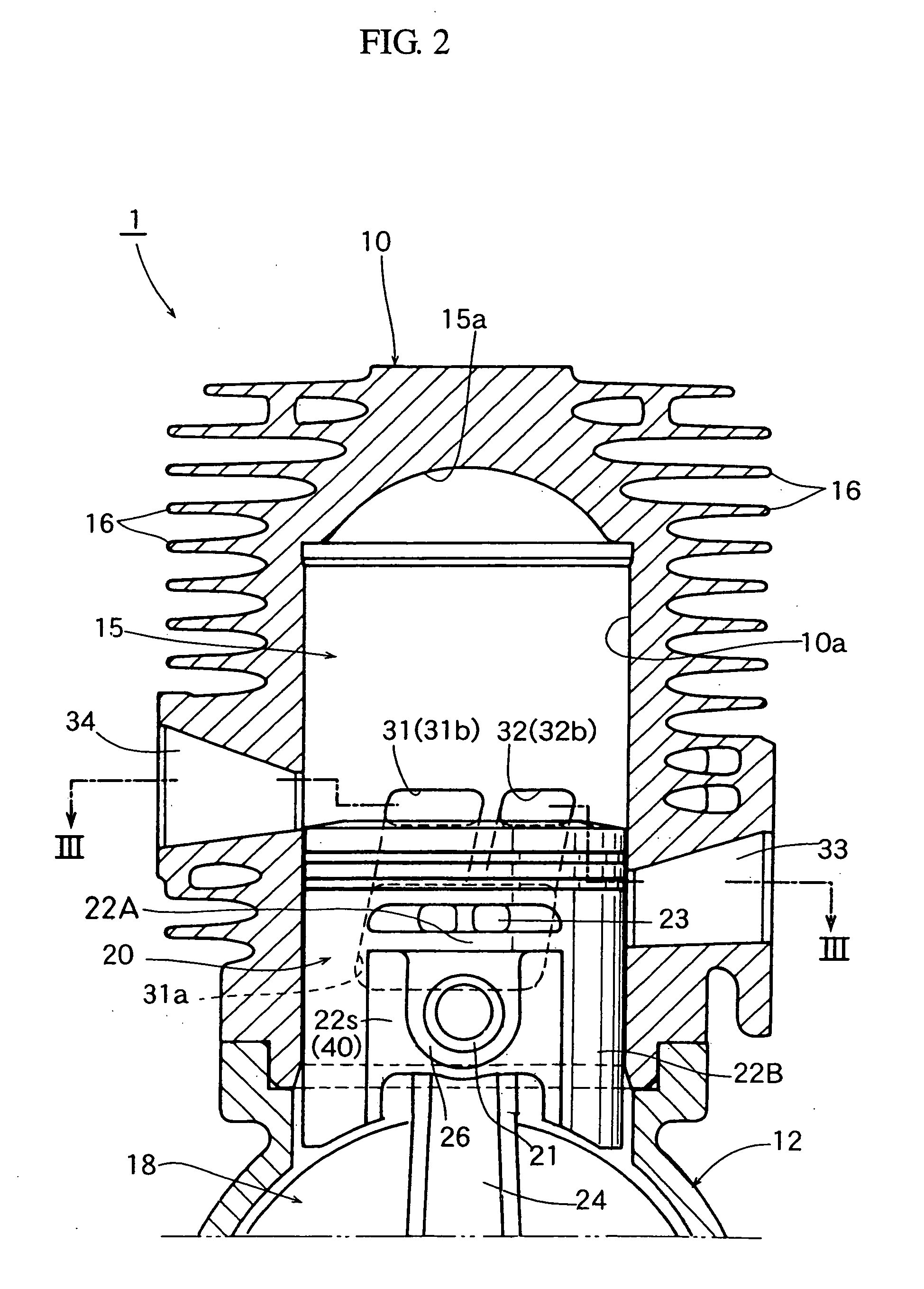Two-stroke internal combustion engine
a two-stroke, internal combustion engine technology, applied in the direction of machines/engines, mechanical equipment, cylinders, etc., can solve the problems of inability to cope with the expected increase in exhaust gas regulation, the influence of these poisonous components on environmental contamination cannot be ignored, and the inferiority of the two-stroke internal combustion engine in fuel consumption, etc., to promote the atomization effect of fuel, enhance combustion efficiency, and improve the effect of scavenging efficiency
- Summary
- Abstract
- Description
- Claims
- Application Information
AI Technical Summary
Benefits of technology
Problems solved by technology
Method used
Image
Examples
Embodiment Construction
[0031] Next, various embodiments of the two-stroke internal combustion engine according to the present invention will be explained with reference to the drawings.
[0032]FIG. 1 is a longitudinal sectional view illustrating one embodiment of a two-stroke internal combustion engine according to the present invention; FIG. 2 is a cross-sectional view taken along the line II-II in FIG. 1; and FIG. 3 is a cross-sectional view taken along the line III-III in FIG. 2.
[0033] Referring to these FIGS., the two-stroke internal combustion engine 1 shown therein is formed of a small air-cooled two-stroke gasoline engine of the quaternary scavenging type, which is adapted to be employed in a portable working machine. This engine 1 comprises a cylinder 10 in which a piston 20 is fittingly inserted so as to enable it to reciprocatively move up and down, and a crankcase 12 which is disposed below the cylinder 10 and hermetically fastened to the cylinder 10. The crankcase 12 defines a crank chamber 18...
PUM
 Login to View More
Login to View More Abstract
Description
Claims
Application Information
 Login to View More
Login to View More - R&D
- Intellectual Property
- Life Sciences
- Materials
- Tech Scout
- Unparalleled Data Quality
- Higher Quality Content
- 60% Fewer Hallucinations
Browse by: Latest US Patents, China's latest patents, Technical Efficacy Thesaurus, Application Domain, Technology Topic, Popular Technical Reports.
© 2025 PatSnap. All rights reserved.Legal|Privacy policy|Modern Slavery Act Transparency Statement|Sitemap|About US| Contact US: help@patsnap.com



